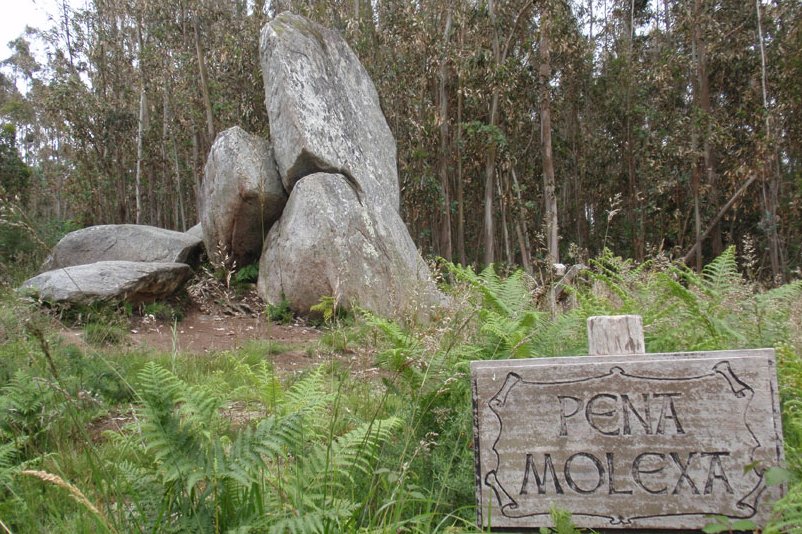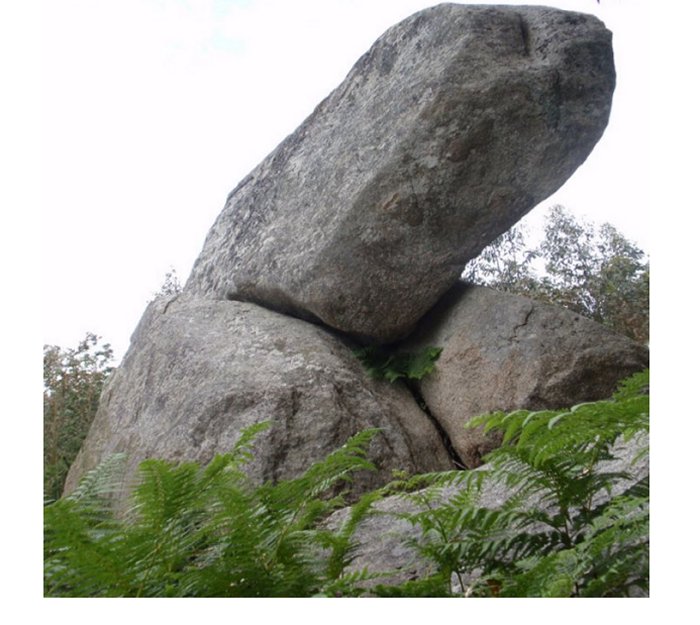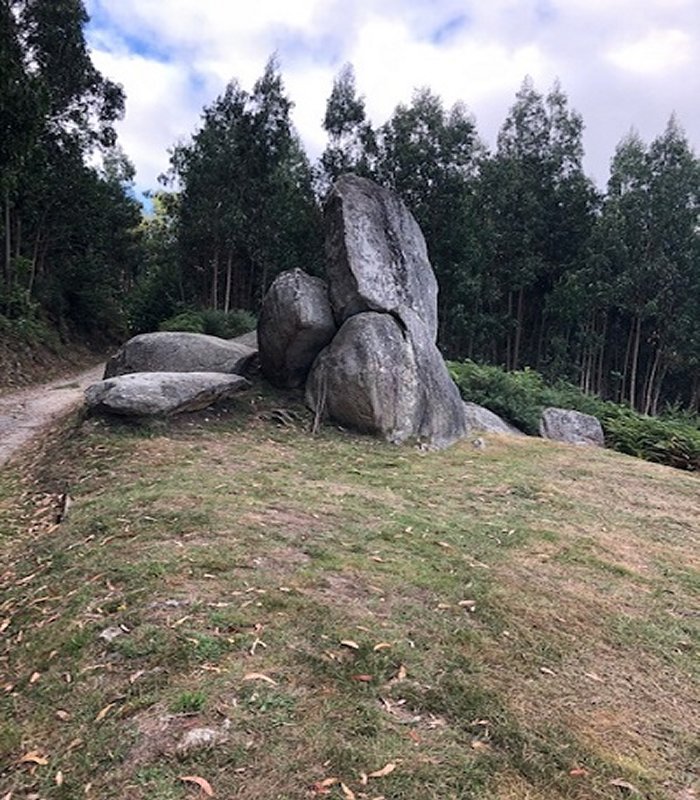A. Sutherland – AncientPages.com – Undoubtedly, the impressive megalithic monument, known as the Pena Molexa, is one of the magical places of Narón in northwestern Galicia in Spain.

A Pena Molexa. – megalith in Galicia. Image credit: Deparpor – CC BY-SA 3.0
It is located in a region dense in symbolism that has captivated people’s imaginations for millennia.
Pena Molexa is an outstanding rock formation surrounded by multiple legends, of which perhaps the best known is devoted to a magician woman who knows the secrets of the earth and the Underworld.
The structure is a large granite rock shaped like a lunar disk placed on large stones shaped like a boat.
It marks where the full moon rises every 19 years on the summer solstice of the Metonic year, a cycle discovered by an Athenian astronomer, Meton (fl. 432 BC).
The boulder Pena Molexa weighs several tons and is placed on huge rocks that form a column. The entire megalithic complex is made up of six large stones that are arranged in a connected way to establish the unique formation.
 Detail of the prehistoric Galician megalith known by the name of Pena Molexa. Image credit: Deparpor – CC BY-SA 3.0
Detail of the prehistoric Galician megalith known by the name of Pena Molexa. Image credit: Deparpor – CC BY-SA 3.0
It appears to have been placed between the granite blocks intentionally, with the help of human hands. In this case; it represents an artificial placement of the Bronze Age that did not happen due to the use of natural chance. The ancient stonemasons did their best.
Tradition has it that the vast megalith, Pena Molexa, was a Celtic altar, a place of worship oriented to the full moon, or sanctuary dedicated to the Mother Goddess that still lives today as a Moura, a cultural phenomenon in beliefs of the Galician people.
One legend says that an Old Woman made this megalith with her little finger and that the day she removes her finger is the world’s end.
Interestingly, for some reason, this place was never adapted in the name of Christianity. The stone cult was a religious custom widespread in Europe during the Bronze Age.

Image credit: Galicia Encatada
According to one legend, thanks to a magic spell, the stone changes to the human form on the morning of Saint John, and later, on the night, it takes the shape of the enchanted and beautiful woman. This supernatural being appears to the young people on a rock next to a golden treasure.
The maiden, who combs her hair with a golden comb while panning for her gold, is searching for a suitor who will free her from spending another whole year inside the rock. The young man must go through the maiden’s test to ensure his love, She gives him two options: either stay with her or get great treasures.
Only Fate can determine what will happen, and the suitor a greedy man), a greedy man year after year, chooses the most valuable piece of gold. Momentarily, the gold fades, and the chosen piece of gold turns into flakes or chars. The maiden will stay another year, waiting for history to repeat itself.
It all has its symbolic meaning because Celtic symbols had a powerful ancestral meaning.
Recent studies reveal that the megalith complex Pena Molexa was the subject of ancient funerary cults thousands of years ago.
Written by – A. Sutherland – AncientPages.com Senior Staff Writer
Copyright © AncientPages.com All rights reserved. This material may not be published, broadcast, rewritten or redistributed in whole or part without thexpress written permission of AncientPages.com
Expand for references
References:
Green, Miranda. Celtic Goddesses
Brown, Peter Lancaster. Megaliths, Myths and Men: An Introduction to Astro-Archaeology





